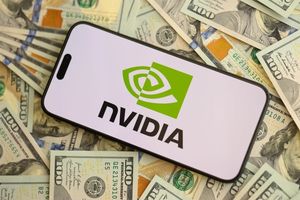
In a financial landscape increasingly defined by rapid rebounds and seemingly endless upward trajectories, a powerful bullish sentiment has taken root, transforming market pullbacks from moments of trepidation into eagerly awaited buying opportunities. As of late 2025, the pervasive "buy the dip" mentality is not merely a strategy but a deeply ingrained psychological reflex among investors, particularly within the burgeoning retail segment. This phenomenon is reshaping market dynamics, contributing to swift recoveries, and raising both optimism and concerns about the underlying health and future direction of asset valuations.
This article delves into the intricate psychology behind this prevalent investment behavior, its widespread adoption across various investor classes, and the immediate implications for market stability, risk-taking, and the potential detachment of asset prices from their intrinsic values. We explore how a decade and a half of policy interventions and consistent market rewards have conditioned investors to view every downturn as a fleeting chance to acquire assets at a discount, setting the stage for an intriguing, and potentially precarious, future.
The Pavlovian Market: How "Buying the Dip" Became the Default Strategy
The current market environment is characterized by an almost automatic "buy the dip" response from investors, a behavior largely conditioned by a prolonged period of market resilience and consistent rewards for those who capitalize on temporary weaknesses. This strategy, which at its core aligns with the classic "buy low, sell high" adage, has become exceptionally prevalent, fundamentally altering how corrections are perceived and acted upon.
The psychology underpinning this widespread behavior is multifaceted. A significant driver is the conditioning of investors over the past 15 years, where repeated fiscal and monetary policy interventions during downturns have fostered an expectation of market rescues. This has created a "moral hazard," leading many to believe that central banks and governments will always step in to prevent significant losses, thus reinforcing the "buy the dip" instinct. This Pavlovian response means that rather than panic selling, investors are now more inclined to view price drops as an invitation to increase their holdings, especially in companies perceived as fundamentally strong.
Furthermore, the rise of passive indexing and Exchange-T`raded Funds (ETFs) (NASDAQ: SPY, NASDAQ: QQQ) plays a crucial role. These investment vehicles provide a "built-in safety net"; as prices fall, continuous passive capital flows often cushion the decline and accelerate recovery. Retail investors, observing this consistent pattern, are increasingly confident that most dips will bounce back, further emboldening their willingness to buy. This enthusiasm is amplified by the democratized access to financial information and discussions on social media platforms, which often create a collective momentum around perceived buying opportunities. The prevalence of this strategy is underscored by reports indicating that retail investors are adding approximately $1 billion for every 1% drop in the S&P 500 (NYSEARCA: SPY). This aggressive dip-buying is also evident in unprecedented options trading volumes, particularly in short-dated and zero-days-to-expiration (0DTE) options, largely driven by retail activity. While institutional investors may exercise more caution, the collective force of retail "dip-buying" has several immediate implications, including accelerated market rebounds and a noticeable increase in risk-taking, sometimes leading to a detachment of asset prices from their intrinsic value.
Winners and Losers in the "Dip-Buying" Arena
The pervasive "buy the dip" sentiment creates a distinct stratification among public companies, with some sectors and individual stocks consistently emerging as beneficiaries, while others find themselves more vulnerable or simply less attractive to this particular investment strategy. Generally, companies with strong fundamentals, robust growth prospects, and high investor conviction are the primary winners.
At the forefront of the beneficiaries are technology and artificial intelligence (AI) sector companies, particularly those categorized as growth stocks. Giants like NVIDIA Corporation (NASDAQ: NVDA), a leading designer of graphics processing units (GPUs) crucial for AI, consistently see their shares rebound swiftly after any market pullback due to insatiable demand and strong future growth expectations. Similarly, Advanced Micro Devices (NASDAQ: AMD) is often cited as a strong "buy the dip" candidate, buoyed by accelerating growth in its chip offerings. Other tech stalwarts such as Microsoft (NASDAQ: MSFT) and Alphabet (NASDAQ: GOOGL), with their diversified business models and strong cash flows, are also seen as having fundamentals that justify their valuations, making temporary dips attractive entry points for long-term investors. Beyond the mega-caps, companies like Align Technology (NASDAQ: ALGN), despite recent headwinds, and Confluent (NASDAQ: CFLT), with its surging AI and data business, are viewed as strong candidates for recovery after a dip. Grid Dynamics Holdings (NASDAQ: GDYN), a tech consulting firm, and ServiceNow (NYSE: NOW), which is integrating AI into its software offerings, also benefit from this sentiment, as investors believe in their long-term growth trajectories. Even real estate investment trusts (REITs) like Equinix (NASDAQ: EQIX), the largest data center REIT, are seen as beneficiaries, capitalizing on the AI boom and potential tailwinds from lower interest rates.
Conversely, companies with weakening fundamentals or inherent business model challenges are less likely to benefit from "buy the dip" strategies. For these firms, a price decline often reflects genuine underlying issues rather than a temporary market overreaction, turning a "dip" into a "falling knife" where losses can be magnified. Highly speculative ventures, especially in nascent tech areas like certain quantum computing stocks with extremely high valuations but unproven business models, can also suffer. Examples like IonQ (NYSE: IONQ) and Rigetti Computing (NASDAQ: RGTI), while in exciting fields, are often viewed with caution by even retail investors, as their declines might not represent a buying opportunity but rather a correction of speculative excess.
Furthermore, defensive sectors traditionally considered "value stocks," such as healthcare, telecommunications, utilities, and consumer staples, tend to be less impacted by this phenomenon. While offering stability, they typically do not experience the dramatic price swings that attract "buy the dip" investors seeking quick gains or discounted growth. Their less volatile nature means smaller "dips" and consequently, less perceived opportunity for significant short-term capital appreciation. The "buy the dip" dynamic, therefore, largely favors established growth companies, particularly those in technology and AI, that possess strong fundamentals and clear long-term growth trajectories, leading to quicker rebounds and robust valuations, while potentially leaving fundamentally weaker or overly speculative companies to face more sustained declines.
The Broader Implications: A Market Reshaped by Optimism and AI
The pervasive "buy the dip" investor sentiment, flourishing in late 2025, extends far beyond individual trading decisions, profoundly reshaping broader industry trends, creating ripple effects across competitive landscapes, and drawing the attention of regulators. This phenomenon is intricately linked to the ongoing technological revolution, particularly in Artificial Intelligence (AI), and operates within a complex interplay of economic expectations and geopolitical realities.
A dominant trend underpinning the "buy the dip" strategy is the all-encompassing optimism surrounding AI. The transformative potential of AI is viewed as a fundamental, structural shift that promises a productivity revolution, making any temporary market setbacks in AI-related stocks appear as attractive entry points for long-term gains. This has led to an unprecedented concentration in the S&P 500 (NYSEARCA: SPY), where the top 10 stocks, predominantly mega-cap AI-focused companies, now account for nearly 40% of the index. This market concentration indicates a heavy reliance on the performance of a select few dominant players, creating both opportunities and potential vulnerabilities. The influence of retail investors remains a critical factor, with their consistent equity inflows during corrections accounting for a significant portion of daily market volume. This sustained optimism, at times, leads to buying irrespective of price, further fueling rapid rebounds.
The ripple effects on competitors and partners are significant. Companies at the forefront of AI, such as NVIDIA Corporation (NASDAQ: NVDA), continue to experience insatiable demand, acting as primary engines of growth and investor interest. This surge creates immense opportunities for their partners in chip manufacturing, cloud services, and software development. However, it also presents challenges for those not directly involved in the AI boom or those struggling with lofty valuations despite robust growth, as seen with companies like Palantir Technologies (NYSE: PLTR) and Advanced Micro Devices (NASDAQ: AMD), which have experienced pullbacks after failing to meet elevated investor expectations. The emergence of open-source AI and cheaper alternatives could also introduce increased competition, challenging the dominance of a few key players and reshaping the AI hardware and software landscape. Geopolitical tensions, particularly the lingering US-China trade and technology rivalry, continue to impact global supply chains, affecting various industries and their partners, even with recent trade deals aiming to ease tensions.
From a regulatory and policy perspective, the sustained "buy the dip" behavior and the AI boom have garnered attention. While the U.S. Securities and Exchange Commission (SEC) has prioritized deregulation in high-growth sectors to foster innovation, there is also a call for increased investor vigilance against opaque disclosures, especially given the rapid advancements and complex nature of AI. Concerns about a potential "AI bubble" due to inflated valuations and market sustainability are leading to scrutiny. Governmental support for AI, often viewed as a national security priority, could inadvertently prolong such a bubble, necessitating careful monitoring by financial authorities. Reports of rising instability among some of the largest U.S. stocks, coupled with record levels of single-stock "fragility" and surging margin debt, indicate a market vulnerable to sharp reversals, potentially prompting regulators to consider measures to mitigate excessive leverage and speculative frenzies, reminiscent of conditions before historical market crashes.
Historically, the current market environment shares striking similarities with the dot-com bubble of the late 1990s, with the emergence of a disruptive technology (AI), speculative investment, and novel valuation methods. However, a key distinction is that today's AI surge is largely driven by established tech giants with diversified revenue streams, unlike the numerous speculative startups of the dot-com era. The efficacy of the "buy the dip" strategy in 2025 has been remarkable, with robust post-pullback returns comparable only to 2020. The S&P 500 (NYSEARCA: SPY), for instance, has gained an average of 0.36% in the trading session following a down day in 2025, an impressive performance over the past three decades. Yet, historical warnings from figures like Bill Gross caution against blindly "buying the dip" during periods that might represent fundamental market shifts rather than temporary corrections, drawing parallels to the "lost decade" of the 2000s. While historical data often supports the long-term efficacy of "buying the dip," the current confluence of high valuations, market concentration, and surging margin debt necessitates a nuanced understanding of potential risks, especially if underlying market conditions fundamentally change.
The Road Ahead: Adapting to a Maturing "Buy the Dip" Landscape
As of late 2025, the future trajectory of the "buy the dip" investor sentiment is poised for a significant evolution, moving from a period of almost guaranteed success to one demanding greater discernment and strategic adaptation. While the underlying optimism, particularly around Artificial Intelligence (AI), and the sheer volume of retail capital are likely to persist, the efficacy of blindly buying every market pullback is increasingly under scrutiny.
In the short term (late 2025 - early 2026), the market presents a mixed picture. Some analyses suggest a decline in investor conviction, leading to instances where attempts to "buy the dip" are failing to hold, indicating a potential shift from exuberant optimism. However, a counter-argument posits that record amounts of cash in money market funds signify underlying long-term investor confidence, ready to deploy during pullbacks. Expectations of cooling inflation and potential Federal Reserve rate cuts also continue to bolster sentiment. Technical indicators, such as the S&P 500 (NYSEARCA: SPY) establishing support at its 50-day Simple Moving Average (SMA), could still encourage near-term dip-buying. The AI sector, while dynamic, is expected to remain volatile, offering both opportunities and challenges for this strategy.
Looking long term (2025 onwards), the "buy the dip" paradigm is expected to transition into a more complex and nuanced environment. While the democratization of finance and the AI boom will remain major market narratives, there's a growing call for a paradigm shift away from speculative growth towards a greater scrutiny of fundamental value. JPMorgan's 2025 market outlook, for instance, anticipates a strengthening macroeconomic environment that could bolster equities, commodities, and emerging markets, with "buy the dip" remaining a central strategy for savvy investors focused on fundamentals. However, growing signs of instability among major U.S. stocks, reminiscent of the dot-com bubble, suggest that simply buying every dip without careful consideration may become a less reliable strategy, signaling a need for more selective approaches.
Strategic pivots and adaptations will be crucial for investors. Deep due diligence and a fundamental focus are paramount, moving beyond speculative hype to identify companies with clear revenue streams, sustainable growth models, and realistic valuations, especially within the AI sector. Sector and geographic diversification will also become more critical, identifying specific AI sub-sectors with strong competitive advantages, and extending diversification across established tech giants, carefully vetted high-growth startups, and geographically towards emerging AI hubs. Investors may need to embrace stock picking over passive indexing, opportunistically buying in cyclical sectors like financials and domestic manufacturers, including mid-cap stocks, which may offer better value. Nimble risk management, integrating geopolitical considerations, will be essential in a period of elevated geopolitical turmoil and policy uncertainty. The ability to distinguish between temporary corrections and actual trend reversals will be key, particularly in volatile assets like gold.
Market opportunities will continue to emerge, albeit with caveats. The AI sector, despite its volatility, will offer opportunities for companies with robust fundamentals. Undervalued cyclicals and financials, impacted by recent tariff fears, could present value-oriented opportunities. Non-U.S. equities, including emerging markets, Japan, and select areas in Europe, may also become more attractive due to a weakening U.S. dollar and improving economic outlooks. Gold continues to be a strong safe-haven asset with significant appreciation potential. However, market challenges are equally prominent. The diminishing efficacy of "buy the dip" is a core concern, potentially leading to increased volatility and sustained downturns. Apprehension about an "AI bubble" due to stretched valuations and unproven profitability remains, alongside risks associated with market concentration and geopolitical uncertainties. Reduced market liquidity and low consumer sentiment also present warning signs.
Potential scenarios range from continued volatility with fleeting dip-buying opportunities, where rebounds are less consistent, to a shifting paradigm towards fundamentals, leading to a "sorting-out phase" for speculative investments. A more significant AI sector correction or bubble burst is also a possibility, cascading through the broader tech market. Alternatively, a "soft landing" could lead to sector rotation towards undervalued cyclicals. Less likely, but possible, is a market melt-up fueled by sustained growth and rapid technological advancements, though this would likely precede a significant correction. Conversely, "stagflation" or geopolitical escalation could severely challenge equity markets, favoring defensive assets. The future demands a more discerning and adaptable approach from investors, prioritizing fundamental analysis, diversification, and robust risk management.
The Bull's Resilience Tested: A Look Ahead
As of November 11, 2025, the "buy the dip" investor sentiment has been a dominant and largely rewarding strategy throughout the year, particularly for retail investors capitalizing on market pullbacks. However, a nuanced and increasingly cautious outlook is emerging, suggesting a potential shift in market dynamics moving forward.
Key Takeaways: The year 2025 has been exceptionally favorable for "buy the dip" strategies, driven by AI optimism, market resilience, expectations of cooling inflation and potential Federal Reserve rate cuts, and a strong belief among individual investors that dips are fleeting. This has led to impressive returns, particularly in the Nasdaq 100 (NASDAQ: QQQ).
Assessment of the Market Moving Forward: The market sentiment is characterized by a blend of cautious optimism and emerging concerns that could challenge the continued efficacy of the "buy the dip" strategy. While some believe the "dip-buying belief has become the new religion," others suggest it is "rapidly losing its efficacy." Key factors influencing this outlook include high valuations and concentration risk, the ongoing U.S. government shutdown, global trade uncertainties, deteriorating market breadth, and mixed economic data. The market appears to be in a "new normal" of heightened volatility and increased scrutiny.
Significance and Lasting Impact: The "buy the dip" phenomenon of 2025 signifies a mature market that has adapted to volatility, with retail traders playing a significant role. This era, however, may be transitioning from a momentum-driven environment to one where fundamentals, risk management, and adaptive strategies are paramount. The lasting impact could be a more discerning market that values resilience and income generation alongside growth, particularly as the transformative power of AI reshapes industries and economies. This period could mark a pivot point, moving away from "easy money" towards an environment demanding greater scrutiny of fundamentals and robust risk management.
What Investors Should Watch For: In the coming months, investors should remain vigilant and focus on:
- Inflation Data and Federal Reserve Policy: Crucial for influencing market direction.
- Resolution of US Government Shutdown: A significant near-term risk and potential catalyst.
- Corporate Earnings and AI Sector Performance: Assessing sustainability of high valuations and growth.
- Global Trade and Geopolitical Developments: Potential triggers for market volatility.
- Market Breadth and Technical Indicators: To discern temporary dips from sustained downturns.
- Consumer Spending and Economic Growth: Key drivers of economic activity.
A more selective approach, emphasizing fundamental analysis and risk management over impulsive dip-buying, may be increasingly critical for long-term success.
This content is intended for informational purposes only and is not financial advice





